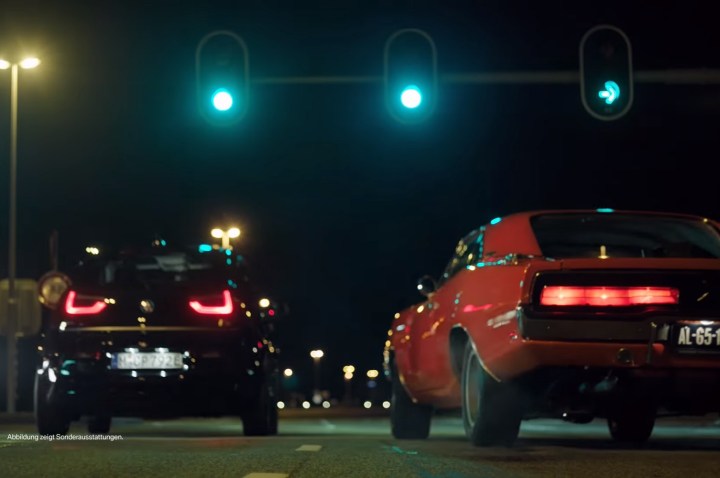
At first glance, putting an i3s and a Charger on the same track sounds like the automotive equivalent of putting Floyd Mayweather Jr. in the same ring as a feeble first grader. The Charger became an icon in the muscle car segment thanks to a massive V8 engine whose output ranged from 375 to 425 horsepower in 1970. To put those figures into perspective, the city-friendly i3s gets by with an electric motor programmed to zap the rear wheels with 184 horsepower. It can’t beat one of the greatest muscle cars of all time, right?
It would undoubtedly lose in a zero-to-60-mph race or in a quarter-mile race, but BMW’s promotional video focuses solely on the first few yards of a drag race. The i3s blows the Charger’s doors off as it effortlessly (and silently) speeds ahead as soon as the light turns green. What gives? Is the Charger running on four cylinders? Did it start in fourth gear?
Not quite. Electric vehicles often have the advantage off the line because the motor generates peak torque instantly. A gasoline-powered engine typically doesn’t deliver its full torque output until at least a third of the way into the rev range, though the actual figure varies greatly from engine to engine. That helps explain why Tesla’s Model X P100D is so dang fast, and why the Charger falls behind the i3s.
To illustrate its point, BMW notes the i3s takes just 3.7 seconds to reach 37 mph from a stop, and 6.9 seconds to go on to 62 mph. The video cuts out after a few seconds’ worth of racing so we don’t know what happens next, but we’d wager the Charger catches up with the i3s pretty quickly. While it’s much older and considerably more basic than the Bimmer, it remains a purpose-built street-legal drag racer. We won’t know for sure unless someone finishes what BMW started.
Editors' Recommendations
- BMW i4 vs. Tesla Model 3: Which EV sedan is better?
- At CES 2020, BMW will make sleeping in a city car sound attractive




